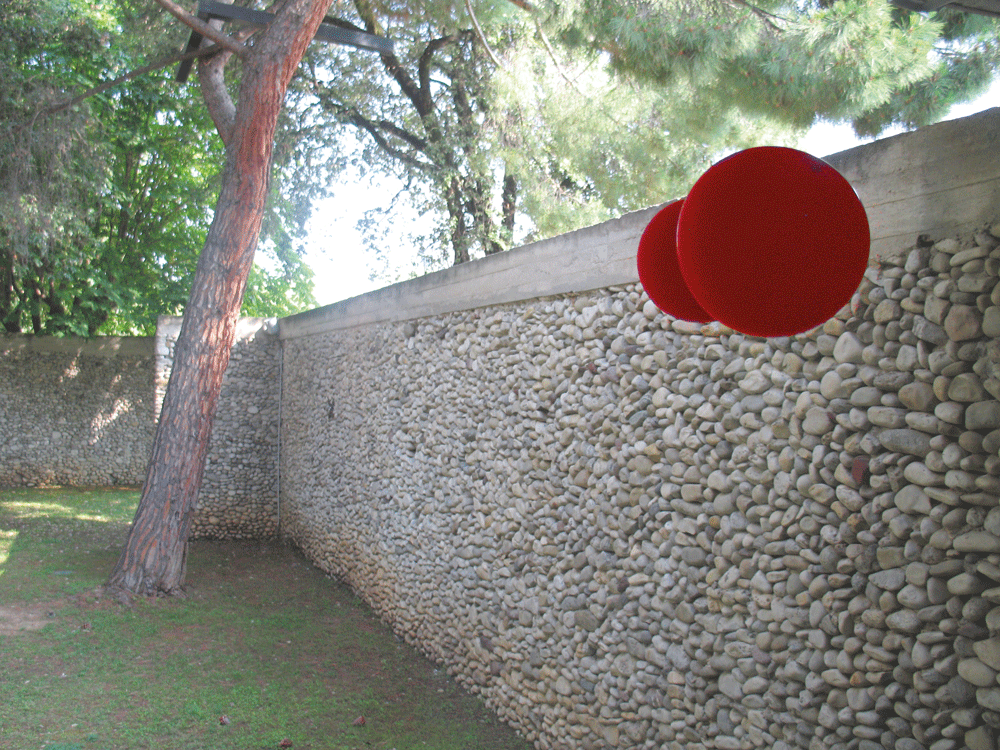Roman Ondak
Le Centre National d'art contemporain de la Villa Arson, Nice, France
Le Centre National d'art contemporain de la Villa Arson, Nice, France

Back in 2003, at Roman Ondák’s exhibition at gb agency in Paris, I collected a set of postcards portraying relatives and friends of the artist who prefer not to travel, photographed in domestic or outdoor settings (Antinomads, 2000). Three years later, I was asked to return one of these postcards to Ondák, whom I had never met, with the inscription ‘wish you were here’ and my signature. This year, at Ondák’s exhibition ‘Shaking Horizon’, held in the galleries of the Brutalist complex of the Centre national d’art contemporain de la Villa Arson, I rediscovered my postcard, alongside dozens of others, in the cellophane sleeves of a small album (Antinomads, 2000/6). I recalled that I had thought hard about which postcard to send and which stamp to affix (a French one depicting Constantin Brancusi’s Sleep, 1908). Which picture did I prefer? Which person looked like they would mind the second journey the least? Which postcard would best represent me? In the end, I stingily decided to send one I had in duplicate, so as not to break up the set.
Throughout this labyrinthine show of works dating from between 1992 and 2010, the theme of reciprocity, so beautifully encapsulated in the mutual regard and exchange of the Antinomads project, emerges as a key motivation for Ondák’s art and exhibition-making. The first work encountered, if one notices it, is Breath on Both Sides (2009), an inflated red balloon squeezed through a small hole in a gallery window pane, one bulbous end poking through the interior, the other enjoying the fresh air of the courtyard outside. Ondák frequently draws attention to the change in status objects acquire once framed by art institutions, but for this work to even exist, the balloon and the architecture must accept this state of co-dependence. Such is also the case with Room Extension (2009), a long white string stretched from one wall, across the gallery, through a hole and over an outdoor grassy patch to a wooden platform hung on a garden wall; and with Window (1997), a porthole framed by a grey pseudo-canvas, which from a distance appears to be a trompe l’oeil painting, but which allows the spectator to peek outside.
Formal reciprocity is enacted within Ondák’s work through acts of giving and receiving, touching and sharing space, as well as in his constant negotiation of the links and slippages between reality and representation. Reciprocity as an ethos, with all that this implies about joint recognition and sociability, is also expressed in ‘Teenagers’ (2002), a series of 12 drawings made by Ondák and his close friend and mentor, the late Július Koller, when they were adolescents. Though made several years apart, their drawings are presented together here, grouped in pairs that highlight likenesses and differences rather than questions of influence or youthful talent. Koller’s smooth, smudged industrial building contrasts sharply with Ondák’s earnestly hard-pressed pencil drawing of a construction site and vehicles, while the elder’s bottle on a black square parallels the younger’s rocket zooming through space. For Big Bang (2006), Ondák invited friends of his children to render their understanding of the birth of the universe, which he described to them using a red Plasticine ball. Big Bang comprises their framed drawings arranged on the floor in a circle around the ball, like a spiral galaxy turning around a burning celestial orb. An accompanying snapshot shows Ondák’s two fingers holding that ball above the heads of two people who happened to pass by his window.
Ondák’s well-known penchant for relying on found situations and objects is in evidence everywhere. A photograph of a squiggly graffito on a bus (Wave in Motion, 1997) belongs to a family of stumbled-upon scenes whose genealogy extends to the present inkjet print series Fail to Fall (2010). With Fail to Fall, however, Ondák left less to chance. He started with the idea for the work and then accumulated images of parachutes and other flying apparatuses that have landed in trees, on buildings or natural outcroppings, which make up a frieze spanning two of the galleries. The work acts as a visual counterpart to the Fluid Border (2009) of transparent tubing, through which water circulates, that runs along the baseboards and snakes across the entries to and exits from one of those spaces, demarcating a large rectangle. In an interview, Ondák claimed he wants the spectator to ‘really finish the work by agreeing to get pulled into this game’. At the same time, he states that Fail to Fall, a tribute to missing one’s mark, is a metaphor for all the other works presented here. These two comments indicate the extent to which Ondák conceives of the exhibition as a social space, and foreground the risks that reciprocity might entail.
























